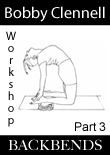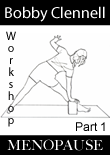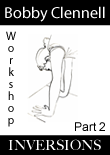You are here
Inversions Workshop
Welcome to the iHanuman Digital Download Store! Enjoy Incredible Classes, Workshops, Lectures and Training Videos to assist your Daily Practice. We Contribute AT LEAST 5% of EVERY Sale to Charitable Organizations. Learn More...
Recorded in May 2010 at Studio Bamboo in Virginia Beach Virginia.There are three recorded sessions in this workshop including Menopause, Inversions and Backbends. This two hour yoga session focuses on the preparatory poses to practice inversions with an extensive look at variations on Handstand, Adho Mukha Vrksasana, and Headstand, Sirsasana Included with this class is an Illustrated Pose List created specifically for this class by Bobby Clennell.
The class is geared toward Intermediate and ongoing practitioners of Yoga and is not recommended for Beginners. The props required for this class are: A Wall, 4 Blankets, A Chair, A Strap and 2 Blocks. This is an audio recording, but please view our video playlist of poses from the workshop.
Are you a Yoga Teacher?
Are you a Yoga Student?
Do you Own a Yoga Studio?



